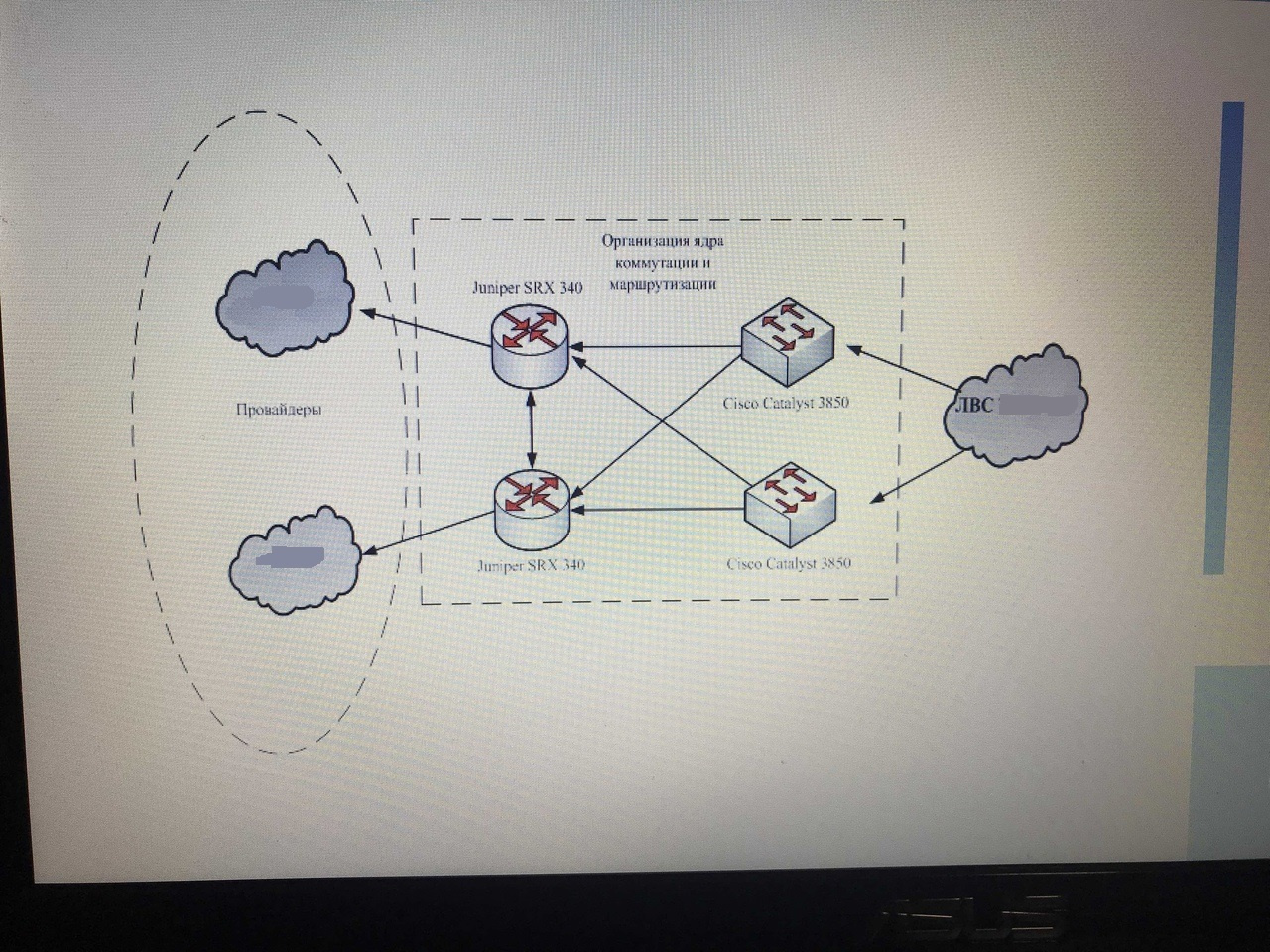Answer the question
In order to leave comments, you need to log in
Routing in local networks towards the provider?
If two aggregation switches work in a cluster and two routers also work in a cluster, but there are two providers. then how does the switch understand which router to send the packet to?

Answer the question
In order to leave comments, you need to log in
In a cluster, most likely, everything is one active router, the second standby. All packets go to the active one, if it breaks, then standby picks up its role.
Rather, everything you have is a stack, which means that two physical devices represent one logical device. With such a connection scheme, STP must also be configured, which means that only one link works, the second link is a backup.
The switch understands to whom to send the packet solely according to the switching table. But the rules for filling it out are determined by protocols of 2+ levels like STP, ARP, LACP, PAGP, CDP, etc.
In the simplest case, according to the scheme, you have the usual HA scheme, in which the switches are connected to the marches by trunk ports, within which VLANs are configured, within which STP is already running if there is redundancy on L2. Or maybe not, if there are no redundant channels on L2. Perhaps there is redundancy on L3, and then HA is achieved by dynamic routing protocols.
Didn't find what you were looking for?
Ask your questionAsk a Question
731 491 924 answers to any question